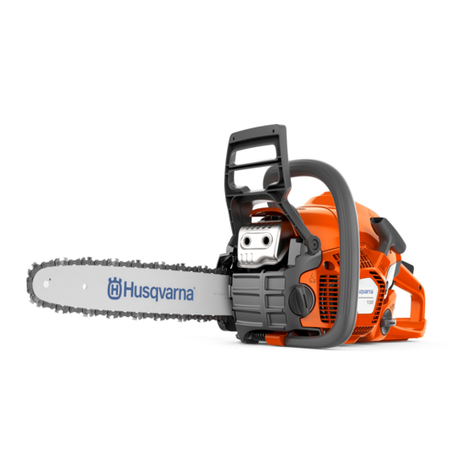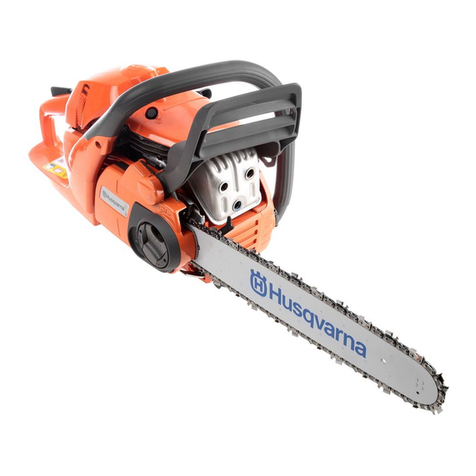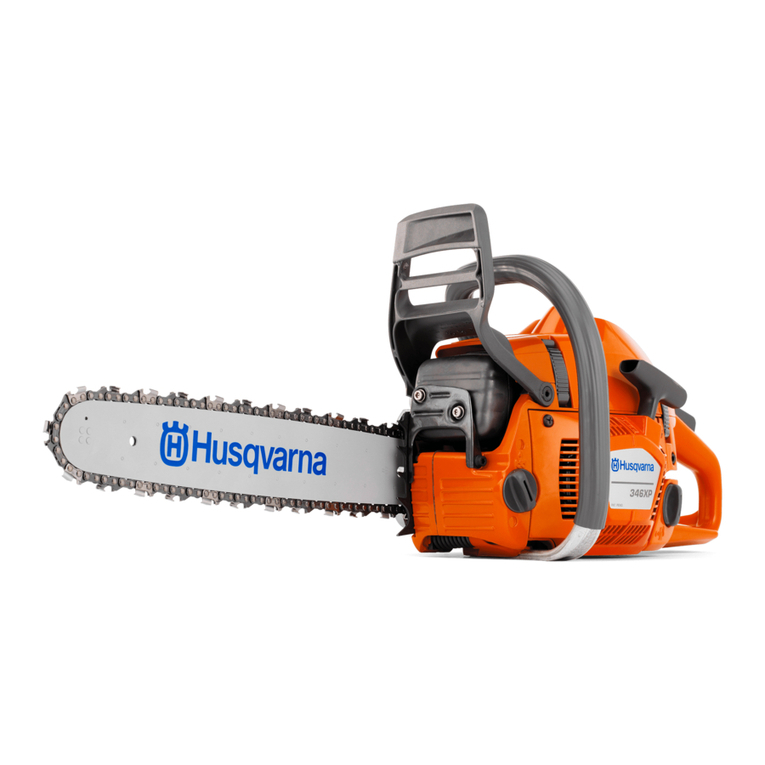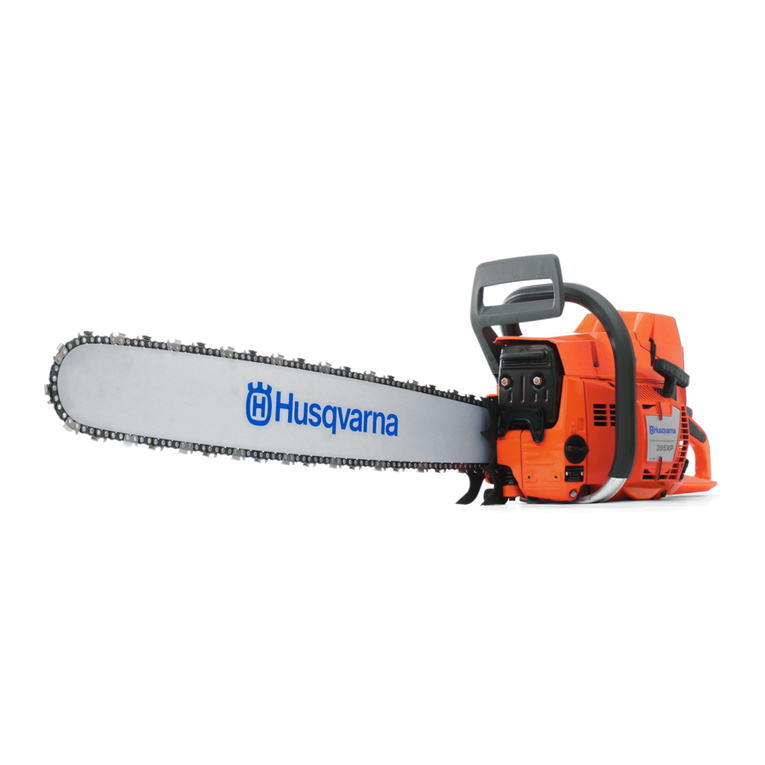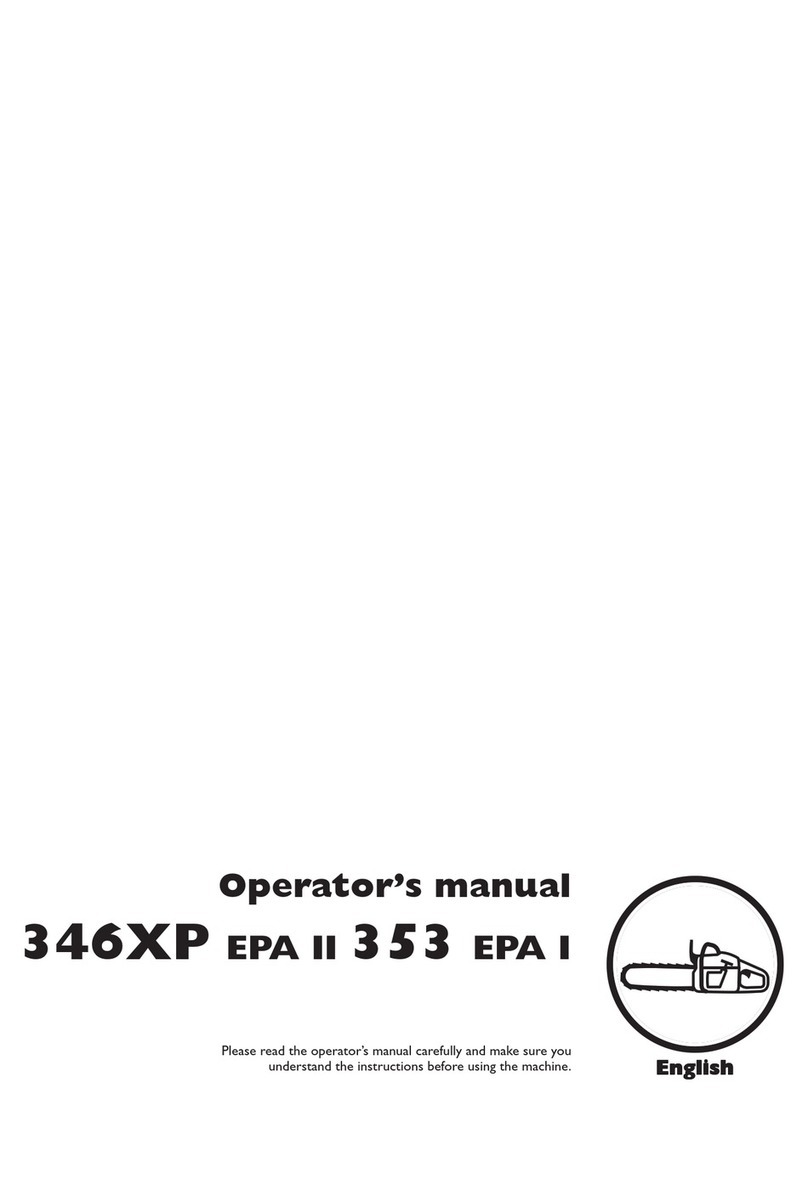
4– English
General instructions
This workshop manual gives detailed instructions
on how to troubleshoot, repair and test a chain-
saw. This section also describes the various safety
precautions that should be taken when carrying out
repairs.
The workshop manual has been written for person-
nel who are assumed to have general experience
of repairing and servicing chainsaws.
Workshops where chainsaws are repaired must be
equipped with safety equipment that meets local
regulations.
No-one should carry out repairs on a chainsaw
until they have read and understood the contents
of this workshop manual.
Chainsaws are type-approved to meet the rele-
vant safety legislation, but this only applies when
the saw is fitted with the cutting equipment speci-
fied in the user’s manual. The fitting of any other
equipment, or of accessories or parts that are not
approved by Jonsered, could mean that the saw
no longer meets these safety requirements and
the person who carried out the work may be held
responsible for its non-conformance.
In this workshop manual the following boxes indi-
cate where caution should be taken.
Special instructions
The fuel that is used in a chainsaw poses the fol-
lowing hazards:
• The fuel and its fumes are toxic.
• May cause irritation to skin or eyes.
• May cause breathing difficulties.
• Highly flammable.
When using compressed air the air jet should
never be pointed at the body. Air can be forced into
the bloodstream and cause fatal injury.
Wear ear protection when testing saws.
After testing a saw do not touch the silencer until
it has cooled down. The silencer gets very hot and
you may burn yourself. Wear protective gloves
when working on the silencer.
The guide bar, chain and clutch cover (chain
brake) must be fitted before the saw is started. If
not, the clutch may come loose and cause injury.
Poor chain lubrication can result in failure of the
chain, which could cause serious or fatal injury.
Take care to ensure that the spring inside the
starter assembly does not fly out and cause injury.
Wear eye protection. If the spring is under
compression when the pulley is removed it could
fly out and cause injury.
Before removing the tensioning spring from the
chain brake, ensure that the brake is in the on
position, otherwise the spring may fly out and
cause injury.
After completing the repair the chain brake must be
tested, see “Chain brake – reassembly \ Operating
test”.
Always consider the fire risk. A chainsaw can
produce sparks that could start a fire.
Inspect the chain catcher and replace it if it is
damaged.
WARNING!
The warning text warns of the risk
of personal injury if the instruc-
tions are not followed.
NOTE!
The warning text warns of the risk of ma-
terial damage if the instructions are not
followed.
Safety regulations
Safety regulations
